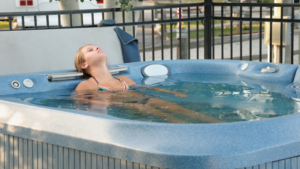Is It Worth It To Move A Hot Tub? If So – How To Move A Hot Tub?
When it comes to moving there are a lot of challenges that we usually face a myriad of challenges and you should have the right team with you to make the process smooth and easy. Whether you are moving a hot tub to a new home or you are moving it to a new place it will not be an easy process if you do not have the right technique and proper tools. The good news is that with adequate planning and perfect supplies you can handle it with ease. The big question we want to know is how to moving a hot tub works. A typical hot tub without water can weigh around 900 pounds and this will require proper planning to avoid damage to the tub. If you can get the services of a professional company you can handle the process without thinking about damages or any other aspects. However, if you want to handle moving a hot tub by yourself here are the steps that you should follow.
1. Gather moving supplies
The first step to making a successful hot tub move is to ensure that you have all the necessary moving tools and supplies. The list should include two furniture dollies, moving straps, cleaning supplies and several large plywood pieces. You can find these supplies at your local hardware store.
2. Reserve a moving truck
Before you begin the process of moving your hot tub you must have a moving truck ready to help you with moving a tub. Depending on the size of your hot tub you can rent a box truck that is at least 15 feet. It is important that you should measure the hot tub before moving it. Your rental truck should have a loading ramp to make the process smooth and easy. There are plenty of companies that can allow you to rent trucks.
3. Recruit moving help
It is vital to note that you cannot move the hot tub alone. You must choose a moving company to help you during the move, or a team of friends/family. When you hire professionals in the field you will be sure that they will do a good job. You do not have to worry about damage because they are experienced in the field. It will be necessary to have at least three people with serious muscles to help you move the tub. However, you can increase the number to five or six to allow you to handle the process smoothly.
4. Evaluate your surroundings
One of the main aspects when you are trying to move your hot tub you should check the surrounding landscape. If you have a tight spot or an area that will give you a wiggle room to make it easy to turn when moving the hot tub. If moving the hot tub is going to damage your yard’s landscaping then it is important that you find a moving technique that will make the process seamless.
5. Disconnect the hot tub
Before you begin the process, you must disconnect the hot tub before draining it. You should unplug the spa from the electrical components. Ensure that you have put all the cords away and water will not reach the electrical units to prevent shocks. If possible, place all the cords in waterproof bags to prevent them from getting wet during the moving process.
6. Drain your tub
Once you have unplugged all the cords the next and important aspect is to drain the tub, this is dumping out all the water. Drain the hot tub by following your manufacturer’s instructions. You do not want to flood your yard with water. You can use a pump to drain the water. Once you have drained it clean the hot tub.
7. Carry out a route planning
One of the fundamental things when moving a hot tub is to plan your route. Whether it is a small gate opening, stairs or narrow pathway you should come up with a plan that will make your process easy. Plan ahead of time to prevent any complication during the day of the move.
8. Place the plywood under the hot tub
It is important to note that placing plywood underneath the hot tub will help in creating a smooth and flat surface during the move. it will also make it easier to roll the furniture dollies underneath the tub. You will need at least three people to help in lifting each corner before placing the wood.
9. Sliding the furniture dollies underneath the hot tub
The next step is to slide the dollies underneath the tub. This is assuming that the pathway of the moving truck is flat. However, if the path is narrow you should carefully turn to the hot tub on the side with the help of several people before sliding the dollies underneath. To ensure that your hot tub does not fall off during transit, you should try to secure it using moving straps.
10. Roll the hot tub into the loading ramp and load it into the moving truck
This is the last step and once you have secured your hot tub to the dollies, carefully and slowly roll it towards the moving truck. You will need at least four people to push it into the truck. Thereafter ensure that one person gets into the truck to secure the hot tub into the truck. The dollies should be in place to make it easy to unload and roll the hot tub into a new position once you reach your new destination.
It is always important to do your homework before you move. Plan and get all your moving supplies before moving any item, especially one that is tricky such as a hot tub. This will answer most questions on how to move a hot tub. To ensure that your hot tub arrives at your destination safely, strongly consider hiring professionals. Click here to get a free estimate.


 Moving Your Art And Paintings
Moving Your Art And Paintings